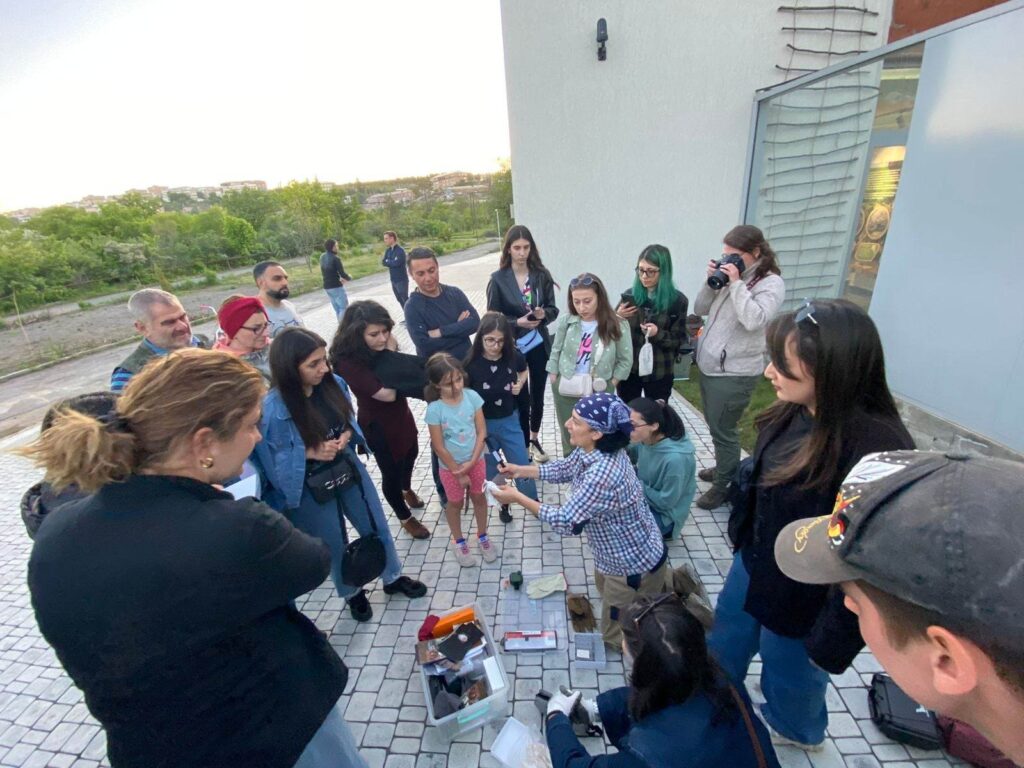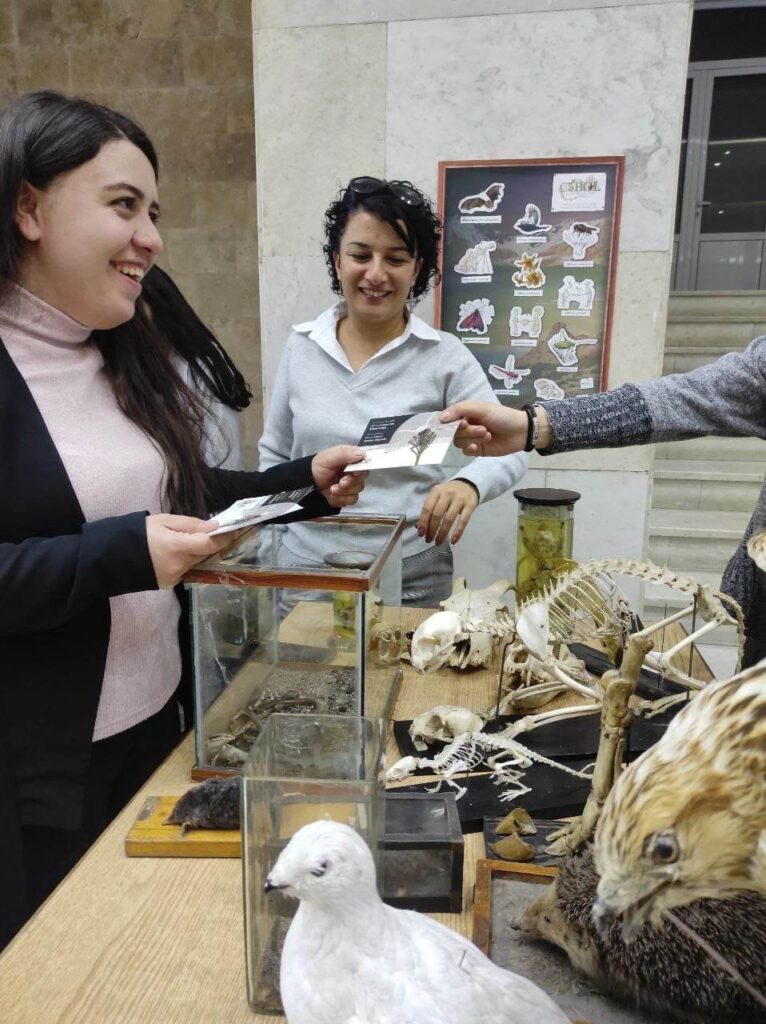Bat Day for Children in Armenia
The department of Zoology has organized Biolblitz event, with the goal of getting the public interested in biodiversity. At the same time the Faculty of Biology were organized BioExpos , the purpose of which is to present the students the importance of biology, the development of its branches and future possibilities. During the Bioblitz, the Department of Zoology presented its scientific activities and programs. Our team informed the visitors about the topics of our works and their importance in animal conservation, the rules of working in field conditions, what innovative technologies we use and showed the applications in laboratory conditions about their importance to the diversity of bats. Various stickers with pictures of bats printed by EUROBATS, as well as unique calendars with images of animals were distributed to the visitors.

In addition to BIOEXPOs, pupils from a number of schools come to visit the faculty of biology to understand how different spheres of biology are developing in Armenia and what opportunities they have if they would like to become an good biologist, zoologist. During this event, students are introduced to our activities, modern laboratories and equipment used during field works.
A BioBlitz also an event such as expos which, is an intense period of biological surveying in an attempt to record all the living species within a designated area. Groups of scientists, naturalists and volunteers conduct an intensive field study over a continuous time period. On 2022 Bio blitz was held in Yerevan Botanical garden where severel scientist present their work in a field (funded By CABOL project). Our bat group present the visitors bats, their unique lifestyle, and biological peculiarities. Bat event was planned in the evening. After introduction talks on bats our team had a walk in a Botanical garden with visitors trying to records flying bats with bat detectors, (sm4 bat, echo meter touch 2.0, Batlogger, Pettersson D 240X).









